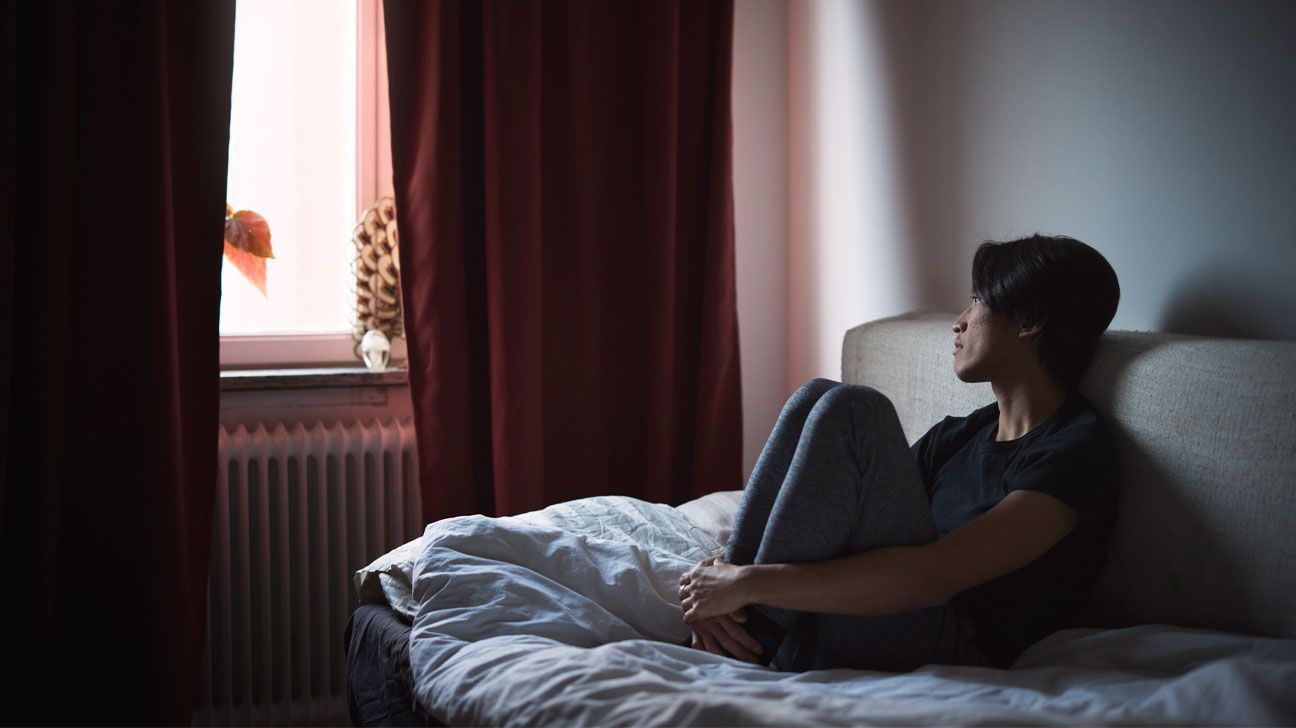
- A new Gallup poll reports that over 18% of U.S. adults have or are being treated for depression.
- Depression rates have been at a historical high since 2024, with young adults and lower-income individuals among the hardest hit.
- Loneliness and financial strain are contributing to the rise in depression.
- A primary care physician is a good place to start if you need help with depression.
A new Gallup poll has found that more than 18% of U.S. adults currently report having or being treated for depression, marking a sustained increase to historically high levels since 2024.
This translates to an estimated 47.8 million Americans grappling with depression this year — an increase of about eight percentage points since 2015.
The data reflect a troubling trend, particularly among young adults and those with lower incomes, highlighting depression as a growing public health concern nationwide.
The survey, conducted through the Gallup National Health and Well-Being Index, surveyed over 11,000 adults ages 18 and older across all 50 states and the District of Columbia during early and mid-2025.
The researchers used representative sampling to reflect U.S. demographics.
Respondents were asked whether a healthcare professional had ever diagnosed them with depression and if they currently have or are being treated for the condition. Here’s what the survey found.
The increase in depression rates has been most pronounced among younger adults under 30 and those from lower-income households.
Since 2017, the depression rate among adults under 30 has more than doubled, rising from 13.0% to 26.7% in 2025.
Depression among young adults continues to climb, rising from 24.6% in 2023 to 26.7% in 2025, showing that this age group faces a growing mental health challenge.
Lower-income adults are also experiencing sharp increases.
For those living in households earning less than $24,000 a year, depression rates jumped from 22.1% in 2017 to 35.1% in 2025 — a striking 13-point rise over eight years.
Since 2023 alone, the rate has surged 9 points, underscoring the mounting mental health burden on economically disadvantaged communities.
Gallup’s experts point to two factors behind the trend among young adults. First, today’s young adults are entering early adulthood with higher baseline rates of depression than their peers from eight years ago.
Second, depression has also risen among adults who were already older in 2017, creating an additive effect that further drives up overall prevalence among younger cohorts.
The study also brings forth another important mental health concern: loneliness.
Among individuals who reported feeling lonely “a lot of the day” the previous day, one-third were also currently experiencing depression, compared with just 13% among those who did not report loneliness.
After declining from pandemic-era highs of 25% in 2020 to a range between 17% and 18% in 2022 and 2023, the rate of adults experiencing significant daily loneliness has risen again to 21% in the latter half of 2024 and early 2025.
This represents the highest level since March 2021, during the early COVID-19 vaccine rollout phase.
The increase is seen across nearly all age groups except adults aged 65 and older, who have remained steady at 15%.
Among young adults aged 18-29, nearly 3 in 10 (29%) now experience significant daily loneliness — higher than any other age group and corresponding with their elevated depression rates.
The proportion of U.S. adults who have ever been diagnosed with depression stands at 28.5%, just shy of the record 29% recorded in early 2023.
This suggests that while more individuals are receiving diagnoses, many continue to struggle with ongoing or recurrent depression.
The sustained high rates of lifetime diagnosis show just how widespread the condition is across the country.
Robert Bell, LPC, LAC, founder of Intrepid Insights, told Healthline that there are several factors driving the rise in depression across the country.
“First, younger adults are navigating unprecedented stressors — student debt, social media pressures, economic uncertainty, and disruptions in building careers and relationships,” he explained. “These challenges can leave many feeling isolated or like they’re falling behind.”
Financial strain is another major contributor, according to Bell.
“When people are worried about how they’ll afford food, housing, or healthcare, the nervous system stays on high alert,” he said, noting that long-term stress often leads to symptoms of depression, such as fatigue, hopelessness, and difficulty concentrating.
“We also can’t overlook the impact of loneliness,” Bell added. “Even though we’re more digitally connected than ever, many people — especially young adults — report feeling deeply disconnected in their day-to-day lives.”
Social support plays an essential role in protecting us from depression, he noted. Without it, we become more vulnerable.
Finally, Bell said cultural factors can play a part in depression.
“In the U.S., we often tie identity to productivity,” he said. “When someone struggles at work or school because of depression, they may feel ashamed, which only compounds the problem.”
If you’re experiencing symptoms associated with depression, it’s important to seek out help, according to Iman Hypolite, MD, CEO, and Principal Psychiatrist at Aspira Health and Wellness Consulting.
Hypolite added that primary care physicians are a good place to start if you need a referral.
She noted that there are several effective treatments available for depression, including therapy, medications, and even evidence-based supplements.
“For others, it may mean lifestyle adjustments such as improving sleep, nutrition, increasing social connection and support, spending more time in sunlight and physical activity, simplifying daily demands, reducing media exposure, or setting healthier boundaries in relationships and at work,” she explained.
Hypolite further noted the importance of early intervention.
Firstly, it can take weeks to get an appointment, so you don’t want to wait until your symptoms become worse. Additionally, delaying treatment can put you at greater risk, she said.
“Untreated depression not only increases the risk of suicide but also contributes to isolation, lost productivity, and financial strain,” said Hypolite, “all of which further undermine the very engagement and stability that can help buffer against depression.”
Hypolite concluded by offering resources for those with depression.
“The important thing to remember is that depression is not a personal failing; it is a signal that support and recalibration are needed,” said Hypolite.
Source link : https://www.healthline.com/health-news/us-depression-rates-historically-high-gallup-poll
Author :
Publish date : 2025-09-10 12:54:19
Copyright for syndicated content belongs to the linked Source.













